

Sewer odors do more than just cause your home to smell disgusting. They can also be quite harmful to human health, depending on how bad it has become. If your home smells like a sewer, then you should act quickly to avoid these health risks:
• Headaches
• Irritability
• Appetite loss
• Fatigue
• Memory loss
• Dizziness
• Pneumonia
• Bronchitis
• Sinus issues
Powerful sewage odors could come from multiple locations in your home. Primarily, these would be the basement, shower, toilet, and sinks. Below, we've highlighted exactly what you need to do to deal with each of these areas.
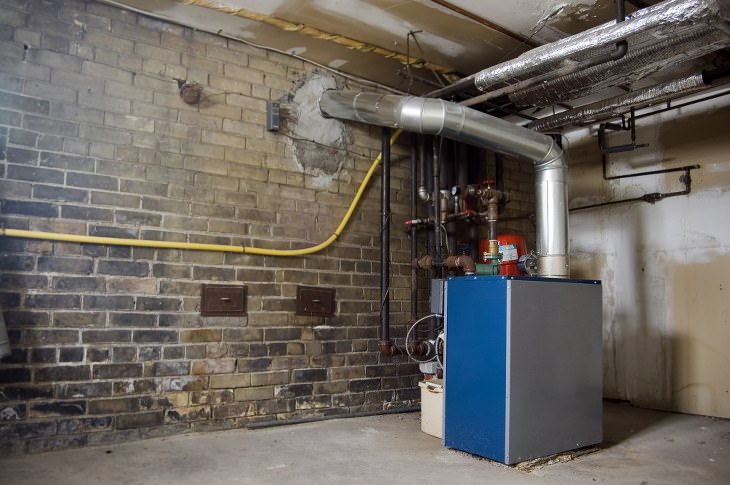
1. Water traps: If your water heater, washing machine, laundry tub or any other appliance has a water trap, then you should make sure to check the water trap levels they have. When not in use for long periods of time, water traps can end up dry, which will allow gases from the sewer to travel into your home. To restore dry water traps, simply pour a glass of water into it to solve the problem.
2. Missing cleanout plugs: If your floor drain has a missing cleanout plug, then this may also allow the passage of sewer gases into your basement. To fix this, simply buy a new one from your nearest home depot store.
3. Broken sewer line: Nasty smells coming from your basement could also mean that there is a damaged sewer line hidden in a wall or under the floor. Unfortunately, if this is the case, you'll need to hire a professional plumber.

1. Infrequently used drains: If a shower drain is not used regularly, then this could cause the water in the p-trap to evaporate, which will allow sewer gases to seep in. To fix this, simply disinfect your shower and run the water for a few minutes.
2. Dirty drains: Biofilm is a type of substance that can accumulate on pipes and drains over time. This odor gets worse when you run the water since the running water will disrupt the biofilm, causing powerful odors to be released. To fix this problem, all you need to do is to use soap, hot water, and a brush to clean your drains all the way down to the p-trap.
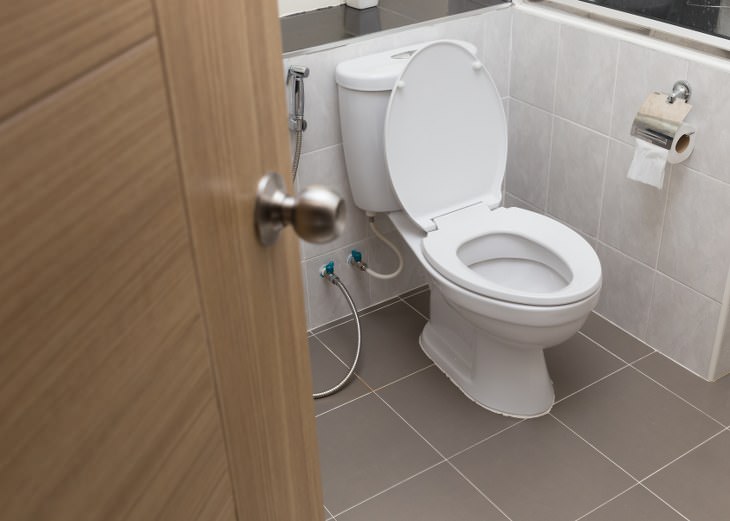
1. Broken Wax Ring Seal: If the seal between the flange and the base of the toilet has become damaged, then this can let gases from the sewer up into your bathroom. Your best bet is to remove the toilet and replace the wax ring entirely, cleaning and disinfecting the area when you're done.
2. No Water in the Toilet Trap: If a toilet is not used for an extended period of time, then water may evaporate out of the toilet trap, which can lead to a nasty smell developing in your bathroom. In situations like this one, always check the water trap before resorting to calling a plumber.

1. Empty Water Trap: As above, an empty water trap can lead to a smell of sewage entering your bathroom, so make sure you keep it topped up.
2. Biofilm Accumulation: If you've got a build-up of biofilm coming from a sink, you will need to completely remove and thoroughly clean each of your sink's components to make the smell go away. Once reassembled, simply pour some boiling water down the sink to rid yourself of any remaining biofilm residue.
To prevent the smell of sewage from ever visiting your home, there's one technique that really can't be beaten! Simply pour a cup of white vinegar down any drain you want to clean, followed by a quarter of a cup of baking soda. Allow it to sit for two hours, before flushing the drain with some piping hot water to eliminate any biofilm that still remains.
Found this information useful? Make sure to share it with your friends too!
Related Articles:
Can’t Smell a Thing? Here Are 8 Possible Reasons Why
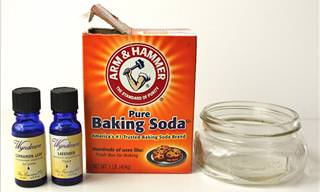
Make Your Home Smell Amazing with These 2 Ingredients
You can make your home smell absolutely amazing by using just these two ingredients. This video will show you how to make your own air freshener.
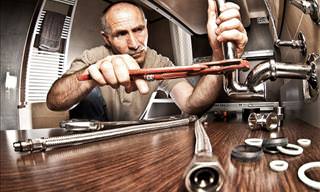
10 Wise Plumbing Tips From a Professional Plumber
Here are ten brilliant tips that can save you heaps of time and money when you've got plumbing problems at home.
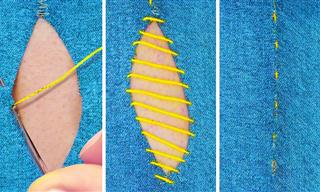 12:33
12:33
23 Clever Sewing Tips and Tricks to Make Your Life Easier
Take note of these cool and easy sewing hacks and crafts that can come in real handy for all of us.

DIY Secrets: Make Your Own, Home-Made Ziploc Bags!
This video will teach you how to make your own home-made Ziploc bags.
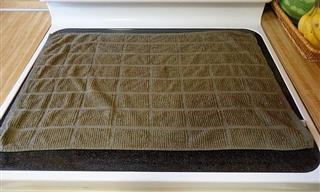
Here's a Really Cheap & Easy Way to Clean a Stovetop
Looking for an effortless and cost-effective way of cleaning your stovetop? Then you've come to the right place.

Here's How to Make Pretty Opaque Window Frosting!
If curtains aren't really your thing, then why not give opaque window frosting a chance? Here's how to make your own at home.
 3:35
3:35
How a Hissing Wild Cat Came to Love Its Human
I love seeing stories that start with a stray animal and end up with it as a happy pet.

Research Shows: Just 2 Spoons of This to Lose Weight
Cider Apple vinegar is making headlines again following a study that found two tablespoons of it per day may greatly help with weight loss and improving blood sugar. Even more than expensive medications and treatments with many side effects.

Read This to Deal With That Terrible Smell In Your Fridge!
If there's a bad odor in your refrigerator, then this guide will show you exactly how to get rid of it quickly and easily.

Surprsing Ways to Stay Happier in 2025, Backed By Science
This year, instead of resolutions, give time to your mental health...

6 Tips to Take Care of Your Woolens This Season
Here’s how you can make sure your woolens last for many winters.
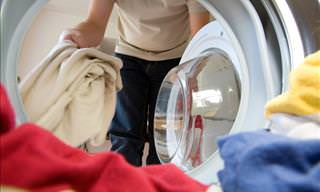 8:07
8:07
The 5 Best Ways to Do Your Laundry Quickly and Efficiently
What's the best way to clean a pair of shoes, or remove grease from fabric? Take a look:

If You Wear These Shoes Often, You Are Damaging Your Feet
Wearing these shoes often can damage your feet!

10 Super-Effective Tips No One Else Will Tell You About
Fix and do just about anything with the following 10 supercool tips and tricks!

Are You Guilty of These Everyday Posture Mistakes?
These mistakes are ruining your posture. Here’s how you can fix them!

Quit Smoking with These 10 Unconventional Tips
Giving up smoking is difficult, but not impossible - especially if you use these 10 unconventional tips.

You Must Read These Safety Tips Before Going For a Swim
A collection of safety tips for ocean and pool-goers.

Impress Guests With 14 Nifty Napkin Fold Styles!
This terrific video tutorial will show you 14 easy-to-do napkin folding styles that are creative, whimsical and will guarantee your guests approach the tables with admiring smiles.

Heed These Great Tips as They Might Save You One Day
Here are 7 simple tips that we should all know, because they may just save us some day.

6 Home Security Mistakes to Stop Making Today
These security mistakes make you home an easy target for intruders. This is how to avoid them.

These Facts About Happiness Will Change the Way You Think
Here are 25 surprising facts about what it actually means to be happy.
 10:55
10:55
30 Well Known Life Hacks Tested- Which is Real?
30 well-known life hacks tested in front of your eyes. Watch this video to save you the time of trial and error

12 Foods We Bet You Didn't Know Could be Microwaved
Do you think that your microwave is only good for heating frozen dinners? If so, you’re sorely mistaken! Use the following microwave hacks to soften sugar, froth milk, whip up some French toast, and more!

When These Flowering Shrubs Bloom, Your Garden Lights Up!
These different types of shrubs are the brightest and most colorful additions for every type of garden across the world.

Genius Hotel and Packing Tricks You’ll Surely Appreciate
These invaluable tricks will help you get around 18 common traveling problems, particularly those that deal with hotels and luggage packing...

Not Sure What to Do This Valentine's? Try These 9 Ideas
Not sure what to do this Valentine's? Here are 9 ideas you could try:
 2:07
2:07
The Man Who Tight-Roped Across the Grand Canyon!
Tight Roping Over the Grand Canyon!

8 Useful Tips That Will Help You Tame Your Anger!
Being angry takes its toll on your health and relationships. Therefore, this video will show you 8 great ways to keep your anger in check.

Keep the Flu Out of Your Home with these 8 Tips
Did you know that if somebody in the family comes down with the flu, all it takes is a couple of hours for the virus to spread? This room-by-room guide will help stop germs in their tracks, keeping everyone at home healthy and flu-free.

Healthy Baking: Tips for Making Healthier Baked Goods
Check out these tips that will help reduce fat and sugar in your baked goods and make them more nutritious.

How To Ward Off the Most Common Summer Pest
In order to prevent unwanted pests in summer - especially cockroaches - consider this one important thing.

How to Clean and Maintain Your Microfiber Towels
A short guide on how to clean and maintain your microfiber towels so that they last a long time.

Watch: A Simple Breathing Technique to Reduce Stress
This is a slow breathing exercise which works wonders for those anxiety-filled situations you just can't control.
 3:40
3:40
Shocking! You Must Watch This Video About Child Safety
This social experiment reveals a shocking fact about child safety in parks. You definitely need to watch this!
 8:12
8:12
These Organization Tips Are the Most Useful You'll Discover
These essential DIY tips will ensure a clean and organized home.

How To Keep Your Glasses In Mint Condition For Years to Come...
7 simple tips that will help you keep your glasses in good condition for a very long time.

Guide: How to Remain Comfortable on a Flight
Whether you’re traveling for business or leisure, these tips will help you fly smarter and healthier.
 6:54
6:54
What's the Best Way to Pick Up a Cat? Find Out!
Learn how to pick up a cat like a pro.

8 Genius Ways to Save Your Phone’s Battery While Traveling
Save your phone battery while traveling with these smart tips.
 11:31
11:31
Lessons in Etiquette: 21 Rules You Can’t Ignore
Watch etiquette expert William Hanson share some important tips that all of us must know.

7 Handy Bathroom Hacks That Will Make Your Life Easier
Here are some handy bathroom life hacks that will help you keep it clean and well-organized conveniently.

Can't Stop Overthinking? This Insightful Guide Is For You
Do you overthink? This guide will help you manage your thoughts better.

Avoid Getting These Items Wet When You’re Cleaning Them
If you’ve ever cleaned your jewelry, gas stovetop, or leather shoes, or contact lenses with water, you need to read this article.

Your Old Spices Can Still Work Wonders Around the House
Here are 11 clever ways to use up spices that have lost their zing.

Weeds Stand No Chance Against This Fantastic Weed Killer
How does a practically free, home-made, all-natural weed killer that's kind to the environment sound? Amazing, right? Here's how to make your very own.

This is All You Need to Know About Saving for Retirement!
Having yourself a defined target for your nest egg is an important aspect of a retirement plan. Here are 8 retirement facts that need to be taken seriously.

Making Laundry Products At Home Is EASY - Here Are 8 Ideas
In this article, we show you how to make homemade laundry detergent, laundry pods, and dryer balls. We also share many more useful laundry tricks.

Quick Grow: Eight Flowers that Will Bloom in 60 Days
We have 8 recommendations for flowers that will grow faster than others.

12 of the WORST Hair Care Mistakes All of Us Still Make
Here are 12 common hair care mistakes that may be responsible for the frizz, dry and split ends, hair thinning, and lack of manageability.
To enable your Ad-Free Subscription, please fill the fields below
Your subscription was successful, now you can enjoy an ad-free experience!! Note: To make sure you get no ads, please make sure to log in to your account. If you are logged in already, then refresh the page. The subscription can be cancelled at any time.


